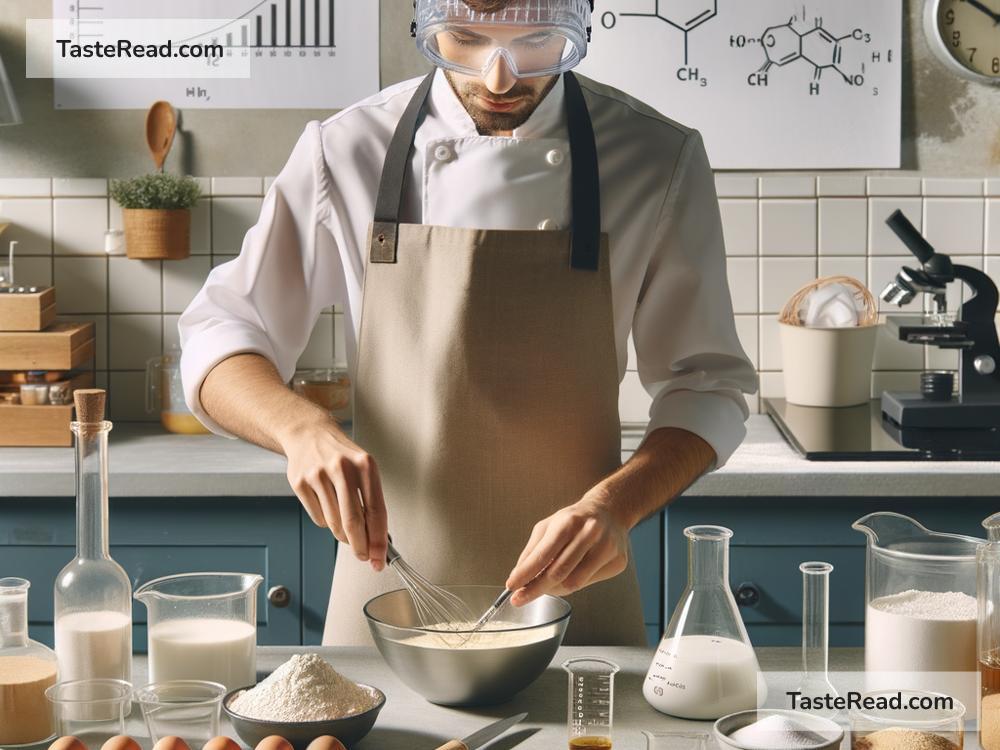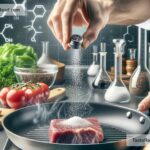The Science of Cooking with Chemical Equilibrium: Techniques and Tips
Cooking is more than just combining ingredients and applying heat; it’s a fascinating science where chemical reactions transform raw ingredients into delicious dishes. One key concept that plays a significant role in cooking is chemical equilibrium. By understanding how equilibrium works, you can master techniques and improve your cooking skills. Don’t worry—this article breaks it all down in simple terms, with tips you can use in your kitchen.
What Is Chemical Equilibrium?
Chemical equilibrium happens when a chemical reaction reaches a balance. In cooking, this means that ingredients and their chemical properties interact until they settle into a stable state. For example, when making caramel, sugar molecules reach a balance between breaking down and recombining into new compounds—resulting in that golden, flavorful syrup we love.
Chemical equilibrium involves reactants (the starting materials) and products (the final result). At equilibrium, the reaction doesn’t stop—it just reaches a point where the rate of forward reactions (forming products) equals the rate of reverse reactions (reverting back to reactants). This balance is crucial in many everyday cooking processes.
How Chemical Equilibrium Plays a Role in Cooking
Here are a few cooking scenarios where chemical equilibrium makes a difference:
1. Baking: Leavening Agents and CO₂ Release
In baking, chemical equilibrium is behind the rise of breads, cakes, and cookies. Leavening agents like baking soda or baking powder react with acidic ingredients (like lemon juice or yogurt) to produce carbon dioxide (CO₂) gas. The gas gets trapped in the dough, causing it to rise.
If the reaction reaches equilibrium too quickly—by using too much leavening agent or exposing it to high heat—your baked goods might collapse. To avoid this, measure your ingredients properly and bake at the correct temperature for the best results.
2. Cooking Meat: Protein Denaturation and Juiciness
In cooking meat, the proteins inside undergo a process called denaturation, where their structure changes due to heat. At higher temperatures, water in the meat evaporates, causing it to become dry. The trick is to find a balance—cook it long enough for the proteins to denature (making it tender and safe to eat) but not so long that all the juices are lost.
For perfect meat, use a thermometer to ensure you hit the sweet spot of temperature equilibrium. Ideal temperatures vary depending on the type of meat, but medium-rare steak, for instance, should be cooked to about 135°F (57°C).
3. Making Pickles: Brine and Salt Equilibrium
When making pickles or preserving vegetables, chemical equilibrium occurs between the salt in the brine and the water inside the vegetables. Salt draws water out of the vegetables while penetrating their cells, leading to a balanced state of flavor and texture.
To perfect your pickles, check the salt concentration in the brine. Too little salt won’t preserve the vegetables properly, while too much will make them overwhelmingly salty. Most recipes suggest using a ratio of 2 tablespoons of salt per quart of water for equilibrium.
4. Caramelization: Sugar’s Transformation
Caramelization is a beautiful example of equilibrium. As sugar heats, it breaks down into smaller molecules, browning and creating aromatic compounds that taste sweet and rich. If the heat is too high, you’ll destroy these compounds and get burnt sugar instead.
The key to perfect caramel is controlling the heat. Cook sugar over medium heat and stir gently to disperse the heat evenly. Use a thermometer to monitor the temperature—between 340°F and 360°F (171°C to 182°C) is the sweet spot for caramelization.
Tips for Using Chemical Equilibrium in Your Cooking
Now that you understand the concept, here are some tips to put chemical equilibrium to good use in your kitchen:
1. Use Precision Tools
Use tools like thermometers, timers, and measuring cups to ensure accurate cooking. Small changes in temperature or ingredient ratios can tip the equilibrium, affecting the final taste and texture of your dish.
2. Control Heat Gradually
Applying heat too fast can move your reactions out of equilibrium. When boiling, simmering, or frying, start with low heat and gradually increase it. This allows chemical reactions to unfold at a manageable pace.
3. Respect Resting Periods
Many foods need time to reach equilibrium even after cooking. Let meat rest after grilling or roasting so the juices redistribute evenly within. The same goes for baked goods, which continue setting after coming out of the oven.
4. Adjust Ingredients Thoughtfully
Balance is everything—too much acidity, salt, or sugar can push reactions too far. Taste-test as you go, and add small amounts of ingredients gradually to preserve equilibrium.
Why Understanding Chemical Equilibrium Matters
Understanding chemical equilibrium doesn’t make cooking more complicated—it makes it easier. With practice, you’ll improve your ability to predict how ingredients interact, leading to better flavor, texture, and appearance. Cooking becomes more about skill and intention, rather than trial and error.
Don’t get overwhelmed by the science; start small. Pay attention to how heat, time, and ingredient ratios affect your cooking. Soon, you’ll notice subtle differences that bring your dishes to life.
So, the next time you whisk up a sauce, bake a loaf of bread, or roast a chicken, remember—you’re not just cooking; you’re creating balanced chemical masterpieces. By embracing the science of equilibrium, you can elevate your culinary game and enjoy food that’s not only tasty but also fascinatingly well-made. Happy cooking!


